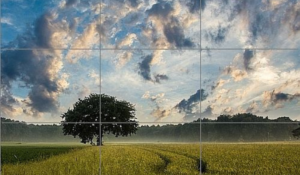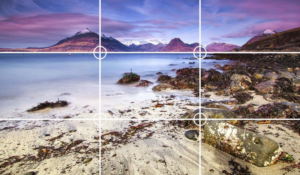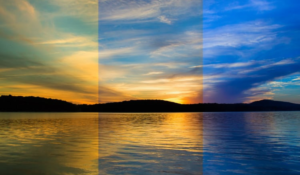Rule of Thirds in Photography: A Complete Guide

The rule of thirds is a cornerstone in photography. It’s a guideline that helps you create captivating compositions. Understanding and utilizing the power of rule of thirds will enhance your visual impact, whether you are a beginner or an experienced pro. This comprehensive guide will explore the intricacies and benefits of this timeless compositional rule, including its definition, practical applications, flexibility across genres, creative potential, and versatility.
Definition and Basics

The rule of thirds, at its core, is a compositional guideline which divides the frame horizontally and vertically into nine grids of equal sections. The grid overlay is used to guide the placement of key elements in the frame. Focus points are usually placed at the intersections or along the gridlines. This principle allows photographers to achieve visual harmony, balance and dynamism in their compositions.
Application and Benefits

It is simple to apply the rule of thirds in practice, but it’s incredibly effective. When framing landscape shots, for example, photographers may position the horizon on one of the horizontal gridlines in order to highlight either the sky or the foreground. In portrait photography, aligning a subject’s eye with the upper horizontal gridline can create an aesthetically pleasing and natural composition.
The rule of thirds is a great way to balance and add interest to your compositions. By placing subjects in the frame off-center, you can not only draw the viewer’s attention but also create a dynamic and engaging visual. The rule of thirds allows photographers to guide the viewer through an image. This creates a more engaging and immersive viewing experience.
Versatility across genres

The versatility of the rule is what makes it so appealing to photographers of all genres. This compositional principle is effective whether you are capturing landscapes or portraits. It can also be used to capture bustling streets, majestic wildlife, or sweeping street scenes. The rule of thirds allows photographers to experiment and explore endless creative possibilities. From positioning the horizon line and main subject to incorporating leading and symmetrical lines, this compositional principle offers endless creative opportunities.
Flexibility and creativity

It’s important to keep in mind that while the rule of thirds is a useful guide for composition, rules are made to be broken. Photographers who are experienced often deliberately deviate away from the rule to achieve certain artistic effects or to evoke specific emotions in their photographs. Breaking the rule of thirds is a great way to create innovative photographs.
Improve Your Performance with These Tips
Consider implementing these practical tips to improve your understanding of the Rule of Thirds:
- To help you compose precisely, activate grid overlays on your camera or in editing software.
- To add visual interest and depth to your compositions, identify the main subjects and include leading lines.
- Use the work of others to get inspiration and insights into how you can apply the rule of thirds.
Final Thoughts
The rule of thirds is a fundamental principle in photography composition. It offers photographers a powerful tool to create visually appealing images. Understanding and applying the rule of thirds will elevate your photography, whether you are a novice looking to improve composition skills or an experienced professional seeking out new creative avenues. Grab your camera and explore the world. Let the rule of thirds lead you on your photographic adventure.



